The 4 C’s of Diamonds: Which C Matters Most?
 If you’ve ever purchased a diamond, such as say, diamond solitaire rings or an engagement ring, you are likely familiar with the phrase “the four C’s.” But even if you can name them all, understanding the difference that each of the C’s makes on the diamond is a much more complicated affair. Many people wonder which one of the four C’s is the most important, and which is the least important in creating a truly beautiful diamond. Our guide to the 4 C’s will not only give you descriptions of each category, it will also help you determine which C matters most for the diamond you are looking for. Read on, and consider yourself schooled in the C’s.
If you’ve ever purchased a diamond, such as say, diamond solitaire rings or an engagement ring, you are likely familiar with the phrase “the four C’s.” But even if you can name them all, understanding the difference that each of the C’s makes on the diamond is a much more complicated affair. Many people wonder which one of the four C’s is the most important, and which is the least important in creating a truly beautiful diamond. Our guide to the 4 C’s will not only give you descriptions of each category, it will also help you determine which C matters most for the diamond you are looking for. Read on, and consider yourself schooled in the C’s.
Cut
A diamond’s cut refers to the angles and facets on the gemstone. Well cut diamonds must have particular proportions and angles in order to internally reflect the light off the stone. If the diamond is cut too deep or shallow, it will cause the diamond to lose its sparkle and brilliance. Interestingly, cut is the only part of a diamond’s beauty than can be controlled, since the cuts are man-made. A perfectly cut diamond requires immense skill from the cutter, for a single wrong cut can impair its sparkle and shine.
Cut also refers to the shape of the diamond. The most common cuts on the market are round, princess, marquis, emerald, pear, oval and heart. The round diamond is the most brilliant of all diamond shapes since the angles of the cuts cause it to reflect the most light.
Why Cut Matters: The cut of a diamond is one of the most important of the four C’s. A perfect cut can hide blemishes and will make a diamond pop and sparkle brilliantly. An improperly cut diamond, no matter how clear or large it is, will lack fire and brilliance.
Color
Diamonds’ color is graded from D-Z on a color scale. They can range from completely colorless (D) all the way to yellow (Z). A diamond’s color is also a big determinant of its value and cost since colorless diamonds are much more rare. However, the naked eye isn’t a good judge of a diamond’s color, and most people cannot differentiate between a D and an F.
Why Color Matters: Color can alter the type of light and fire that a diamond reflects. However, many people like ‘warm’ tones in their diamond or even prefer the yellow hue to a colorless diamond. It’s mainly a personal preference, and if you don’t care about the color grading you can save a lot of money by getting a diamond of lower color quality.
Carat
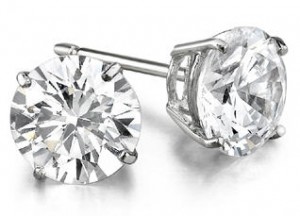 A carat actually doesn’t refer to a diamond’s size – it refers to the weight. Carat impacts diamond size dramatically since larger diamond are much harder to find. However, you can buy a very large carat diamond with poor cut and clarity for less than a much smaller, more flawless diamond.
A carat actually doesn’t refer to a diamond’s size – it refers to the weight. Carat impacts diamond size dramatically since larger diamond are much harder to find. However, you can buy a very large carat diamond with poor cut and clarity for less than a much smaller, more flawless diamond.
Why Carat Matters: Going up only slightly in size can make the diamond’s price jump exponentially. Try buying a carat size that is just under the next highest carat to save big. For instance, if you want to buy a one carat diamond, buy a .9 carat diamond instead. You can’t tell the size difference with a naked eye, but you can save hundreds (if not a thousand) of dollars for staying under 1 carat.
Clarity
Clarity is a measure of how flawless the diamond is. Almost all diamonds have internal flaws, called inclusions. The more flawless a diamond, the less inclusions it has, and the more expensive it is. Clarity is measured on a scale that ranges from Included 3 (the most inclusions) up to Flawless. Most likely, a good diamond will fall in the range of Slightly Included to Very Very Slightly Included.
Why Clarity Matters: Inclusions, even if they are not visible the naked eye, obstruct the light from reflecting evenly off the facets of the diamond. This reduces the sparkle and brilliance. However, almost all diamonds have inclusions; as long as they are slightly included or better the inclusions aren’t visible to the naked eye.
So, which of the four C’s matters most?
In a nutshell, the importance of each C is dependent upon the recipient’s personal taste. If all a person wants is a huge diamond, they can sacrifice color and clarity to afford a bigger carat. Many people want a diamond that sparkles brilliantly, and should focus on finding a diamond with a perfect cut and least amount of color (light reflects best off colorless diamonds since color absorbs the light). Determine what is most important in your diamond, and shop around to compare the difference that each of the 4 C’s make. This, along with the information in our handy guide above, should enable you to pick the perfect diamond to suit your taste and price range.
Category: Jewelry Tips







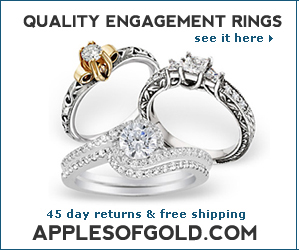

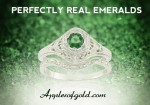

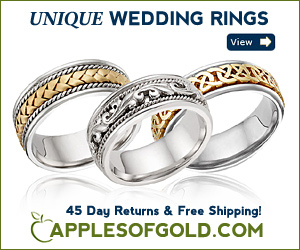
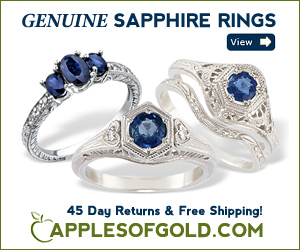
I personally think that all the C’s are important when purchasing a diamonds. Nice post on the explanation of each C.